Information:
1998. HALF-LIFE sends a shock through the game industry with its combination of pounding action and continuous, immersive storytelling. Valve's debut title wins more than 50 game-of-the-year awards on its way to being named "Best PC Game Ever" by PC Gamer, and launches a franchise with more than eight million retail units sold worldwide.
NOW. By taking the suspense, challenge and visceral charge of the original, and adding startling new realism and responsiveness, Half-Life 2 opens the door to a world where the player's presence affects everything around him, from the physical environment to the behaviors even the emotions of both friends and enemies.The player again picks up the crowbar of research scientist Gordon Freeman, who finds himself on an alien-infested Earth being picked to the bone, its resources depleted, its populace dwindling. Freeman is thrust into the unenviable role of rescuing the world from the wrong he unleashed back at Black Mesa. And a lot of people he cares about are counting on him.The intense, real-time gameplay of Half-Life 2 is made possible only by Source®, Valve's new proprietary engine technology. Source provides major enhancements in:Characters: Advanced facial animation system delivers the most sophisticated in-game characters ever seen. With 40 distinct facial "muscles," human characters convey the full array of human emotion, and respond to the player with fluidity and intelligence.Physics: From pebbles to water to 2-ton trucks respond as expected, as they obey the laws of mass, friction, gravity, and buoyancy.Graphics: Source's shader-based renderer, like the one used at Pixar to create movies such as Toy Story® and Monster's, Inc.®, creates the most beautiful and realistic environments ever seen in a video game.AI: Neither friends nor enemies charge blindly into the fray. They can assess threats, navigate tricky terrain, and fashion weapons from whatever is at hand.Like its predecessor, Half-Life 2 is a single-player first-person shooter broken into several chapters, permanently casting the player as the protagonist Gordon Freeman. The sequel has nearly the same mechanics as Half-Life, including health-and-weapon systems and periodic physics puzzles, except with the newer Source Engine and improved graphics. The player also starts without items, slowly building up an arsenal over the course of the game. Despite the game's mainly linear nature, much effort was put into making exploration rewarding and interesting; many optional areas can be missed or avoided.A diverse set of enemies is present, which usually require being approached with different tactics: some coordinate in groups to out-maneuver or out-position the player; others, like the Manhack, fly directly at the player through small openings and tight corridors; still others use predictable but powerful attacks, while others hide before swiftly attacking the player. Gordon can kill most enemies with his weapons, or make use of indirect means, exploiting environmental hazards such as explosive pressurized canisters, gas fires or improvised traps. For some portions of the game, Gordon can be joined by up to four armed Resistance soldiers and medics, and can send his team further from him or call them back.Many of the game's new features utilize its detailed physics simulation. Two sections of the game involve driving vehicles. Instead of button-based puzzles from Half-Life, environmental puzzles are also introduced with makeshift mechanical systems, revolving around the player's new ability to pick up, move, and place objects. Solutions involve objects' physical properties, such as shape, weight, and buoyancy. For example, in Chapter 3, Route Kanal, the player is required to stack cinder blocks on a makeshift see-saw ramp to proceed over a wall. Alternatively, the player can use these to build a crude staircase, so sometimes, multiple approaches lead to the desired outcome.Part-way through the game, Gordon acquires the Gravity Gun, which allows him to draw distant objects towards himself or forcefully push them away, as well as the ability to manipulate larger and heavier objects that he cannot manipulate without the weapon. These abilities are required to solve puzzles later in the game, and can also be used to great effect in combat, as any non-static object within proximity to the player has the potential to be used as a makeshift defense (e.g. a file cabinet) or a deadly projectile (e.g. a gasoline can or a buzzsaw blade).The game never separates the player with pre-rendered cutscenes or events; the story proceeds via exposition from other characters and in-world events, and ensures that the player controls Gordon for the entirety of the game. Much of the backstory to the game is simply alluded to, or told through the environment.One of the most subtle, though much borrowed since, is the way that Valve tends to show new mechanics off three times—first with no pressure, then some pressure, and then for real to be sure the player has grasped and understood it, before it becomes an assumed skill. The gravity gun for instance. First you just move a solid box into position to meet Alyx. Then her robot Dog throws other boxes at you for you to catch. Then, it’s zombie fighting time.But. With Half-Life 2, Valve had a game that managed to get the necessary traction to create the service we know today, and while nobody would claim it’s perfect, nothing else has done so much to legitimize and make digital distribution work. Much as it took Apple to break the music industry’s obsession with DRM on MP3 files, it took Steam to show the whole industry that the game had changed. The idea that you’d be able to redownload your games in perpetuity for instance was heresy to companies that at best wanted that to be another service. Being able to download them onto any machine instead of them being locked to a single PC, or maybe three, or five? That just wasn’t done. Valve was the first major company to build a digital download service that people actually wanted to use, that made the experience of buying games online better. Without Half-Life 2 though, who would have used it? Without that audience, who would ever have agreed to let a competitor sell their games? Half-Life 2 didn’t just give the FPS a shot in the arm, it changed the entire industry.It wasn’t a perfect game. It was far more a series of cool things than Half-Life’s journey, it was heartbreaking to be taken out of City 17 almost immediately in favor of being consigned to the countryside, the story was primitive and a few of the set-pieces dragged on far too long. It held up pretty well for years, but looking back, yes, it’s now a bit long in the tooth. Few games though have had a more lasting impact in so many ways, or can be deservedly held up as both paragon and pioneer. Fewer still have done it so well, they’re still being copied a decade later.
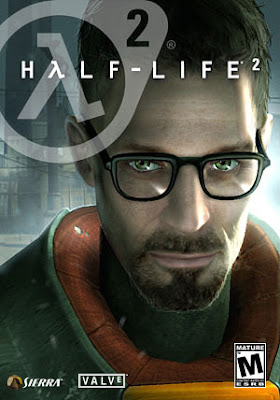
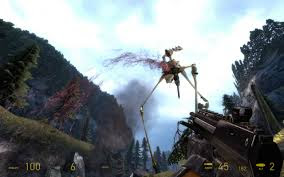
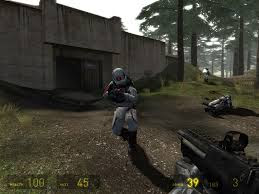
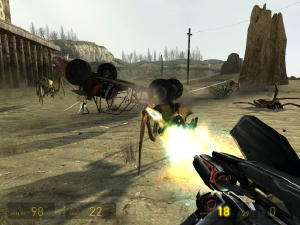
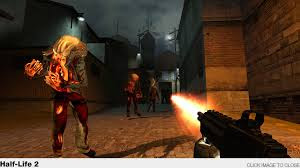



No comments:
Post a Comment